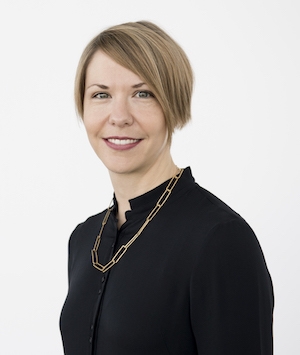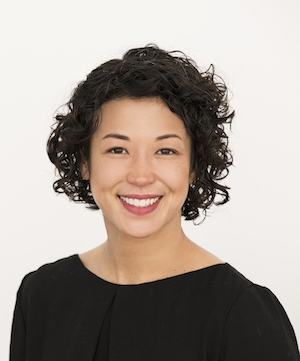Jill Medvedow, Ellen Matilda Poss Director of the Institute of Contemporary Art/Boston (ICA) announced today one new appointment and three promotions within the museum’s curatorial staff. The promotions include Jeffrey De Blois to Assistant Curator, Ruth Erickson to Mannion Family Curator, and Jessica Hong to Assistant Curator. New to the ICA is Ellen Tani, who has been appointed Assistant Curator.
“Ruth, Jeff, Jessica, and Ellen each bring unique skill sets, varied interests, enthusiasm and energy to the ICA, and they will all play a central role in shaping the museum’s future program,” said Eva Respini, the ICA’s Barbara Lee Chief Curator. “These four talented, bright, and creative individuals will no doubt carry forward ICA’s mission to be a laboratory for new ideas.”
BIOS
Jeffrey De Blois
Since coming to the ICA in July 2015, Jeffrey De Blois has organized The Freedom of Information portion of First Light: A Decade of Collecting at the ICA, coordinated the Boston presentation of Walid Raad (organized by the Museum of Modern Art, New York) and made key contributions to Art in the Age of the Internet, 1989 to Today (February 7-May 20) and its accompanying publication. He assisted with several exhibitions including Steve McQueen: Ashes, 2017 James and Audrey Foster Prize, The Artist’s Museum, Diane Simpson, and Ramin Haerizadeh, Rokni Haerizadeh, and Hesam Rahmanian: The Birthday Party. De Blois also coordinated the publications for The Artist’s Museum and Diane Simpson. His upcoming projects include organizing Caitlin Keogh (May 9-August 26) and coordinating Jason Moran (September 19, 2018-January 21, 2019), which originates at Walker Art Center, Minneapolis.
Ruth Erickson
Ruth Erickson first joined the ICA in 2012 as a Research Fellow for Leap Before You Look: Black Mountain College 1933-57. She subsequently joined the museum as Assistant Curator and was promoted to Associate Curator in 2016. In her two and a half years as a curator, Ruth has organized or coordinated 10 exhibitions, including Nari Ward: Sun Splashed (originally from the Peréz Art Museum Miami), Ethan Murrow: Seastead, and Ramin Haerizadeh, Rokni Haerizadeh, and Hesam Rahmanian: The Birthday Party. Recently, Erickson organized Mark Dion: Misadventures of a 21st-Century Naturalist and edited its accompanying monograph. She additionally contributes to growing the ICA’s collection, coordinating the Collections and Exhibitions Committee, and overseeing the digitization of the collection. Her current and upcoming exhibitions include Wangechi Mutu: A Promise to Communicate (on view through December 31) and Kevin Beasley (May 9-August 26).
Jessica Hong
Jessica Hong has completed nine projects since joining the ICA in 2016. She is currently organizing Arthur Jafa’s first exhibition in Boston and the ICA’s presentation of We Wanted a Revolution: Black Radical Women, 1965-85 (June 27-September 30), originally from the Brooklyn Museum. Recently, she helped organize Wangechi Mutu: A Promise to Communicate, Mark Dion’s first U.S. survey, Dana Schutz, Nari Ward: Sun Splashed (organized by the Peréz Art Museum Miami), Gillian Wearing’s first presentation in Boston, Nalini Malani: In Search of Vanished Blood, Liz Deschenes, Geoffrey Farmer, and First Light: A Decade of Collecting at the ICA, including curating the Rineke Dijkstra/Nan Goldin portion of this landmark exhibition. Hong also contributed to the corresponding monograph for Mark Dion: Misadventures of a 21st-Century Naturalist—the artist’s first in over 20 years—and coordinated the production of Liz Deschenes’ first major publication. Furthermore, she helps manage acquisitions for the ICA’s fast-growing collection and oversees collection research.
Ellen Tani
Ellen Tani comes to the ICA from the Bowdoin College Museum of Art, where she is currently the Andrew W. Mellon Postdoctoral Curatorial Fellow. There, she teaches classes using objects from the museum’s collection and acts as a key member of the curatorial team. She organized the exhibition Art and Resolution: 1900 to Today and advises collaborations with student and faculty. She also contributes to the museum’s strategic collecting plan, leads faculty workshops, and has developed a major public tagging initiative of the museum’s extensive collection. She is currently developing Second Sight: the Paradox of Vision in Contemporary Art (Spring 2018), whose catalog she authored and edited. Her research engages the fields of American art, black studies, race & ethnicity, design, and conceptual art. Her writing has appeared in American Quarterly, Art Practical, Daily Serving, Temporary Art Review, The Chart, as well as the exhibition monographs of Charles Gaines and Senga Nengudi.
About the ICA
An influential forum for multi-disciplinary arts, the Institute of Contemporary Art/Boston has been at the leading edge of art in Boston for 80 years. Like its iconic building on Boston’s waterfront, the ICA offers new ways of engaging with the world around us. Its exhibitions and programs provide access to contemporary art, artists, and the creative process, inviting audiences of all ages and backgrounds to participate in the excitement of new art and ideas. The ICA, located at 25 Harbor Shore Drive, is open Tuesday and Wednesday, 10 AM–5 PM; Thursday and Friday, 10 AM–9 PM (1st Friday of every month, 10 AM–5 PM); and Saturday and Sunday, 10 AM–5 PM. Admission is $15 adults, $13 seniors and $10 students, and free for members and children 17 and under. Free admission for families at ICA Play Dates (2 adults + children 12 and under) on last Saturday of the month. For more information, call 617-478-3100 or visit our website at www.icaboston.org. Follow the ICA at Facebook, Twitter, and Instagram.
All photos by Liza Voll.



